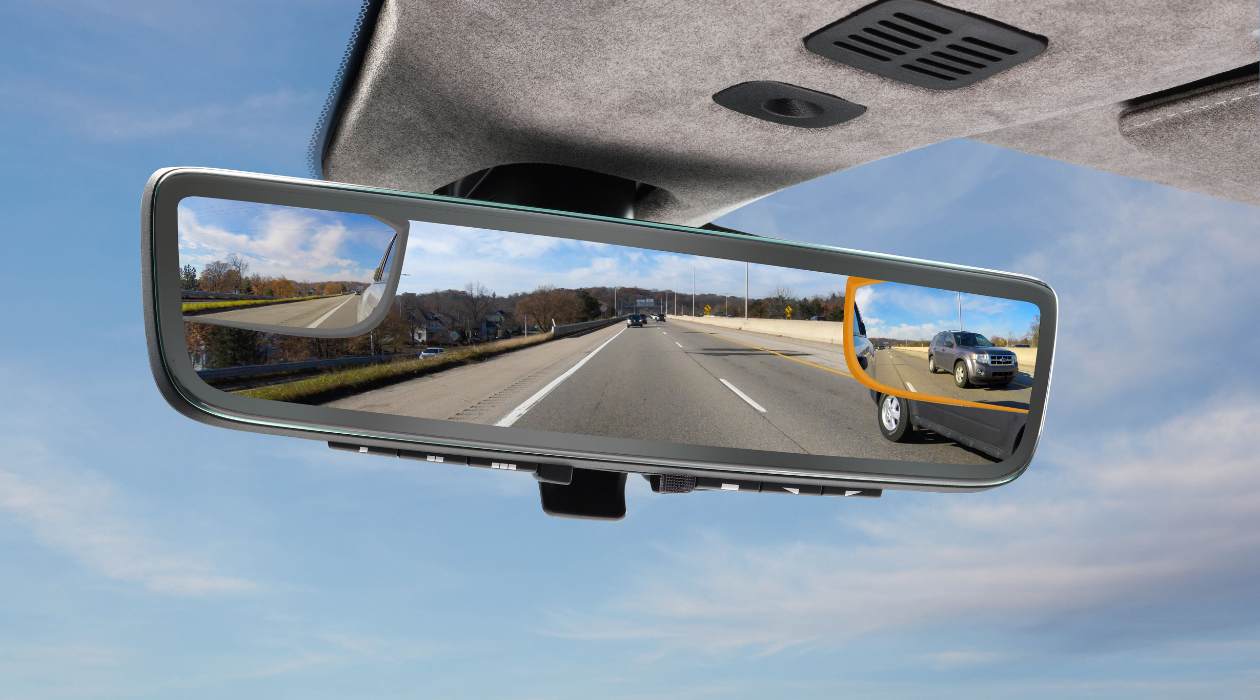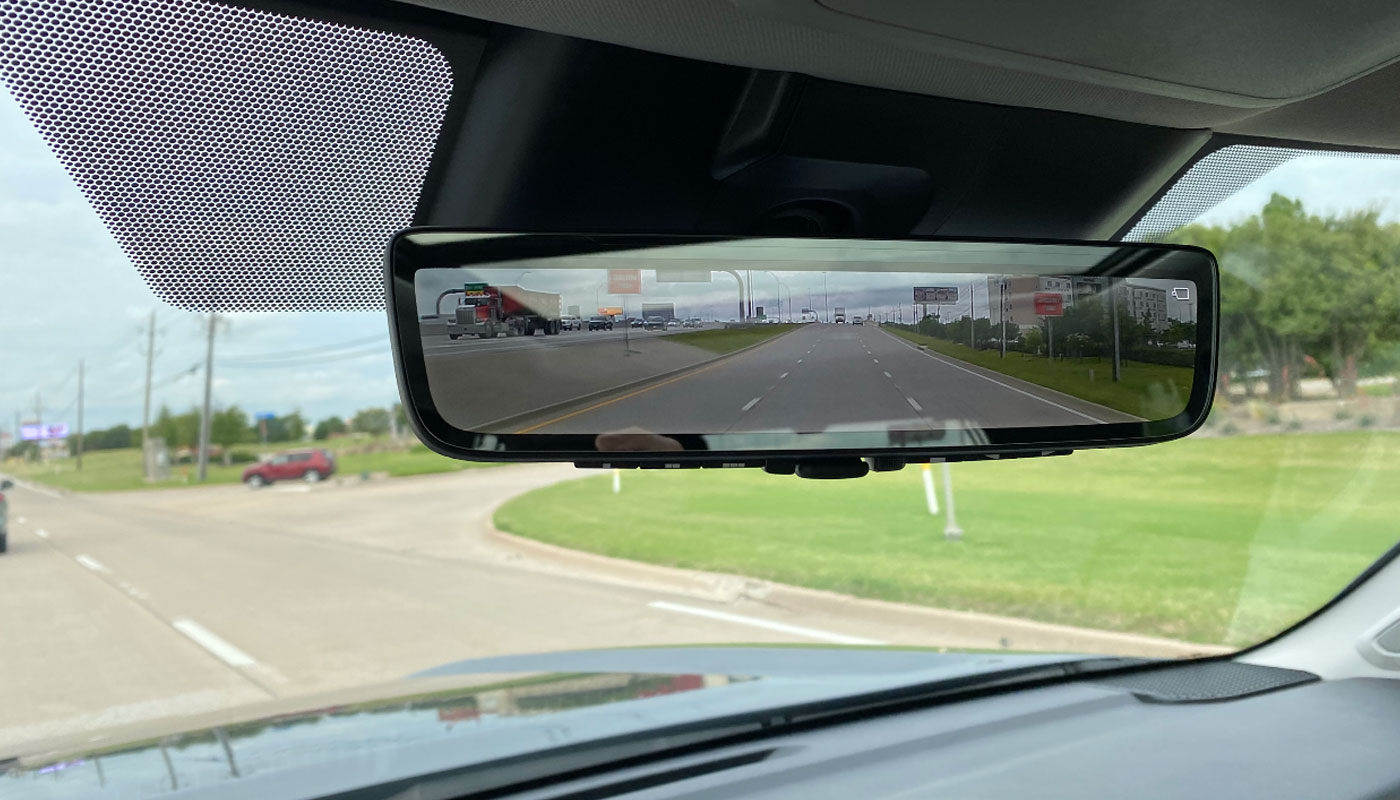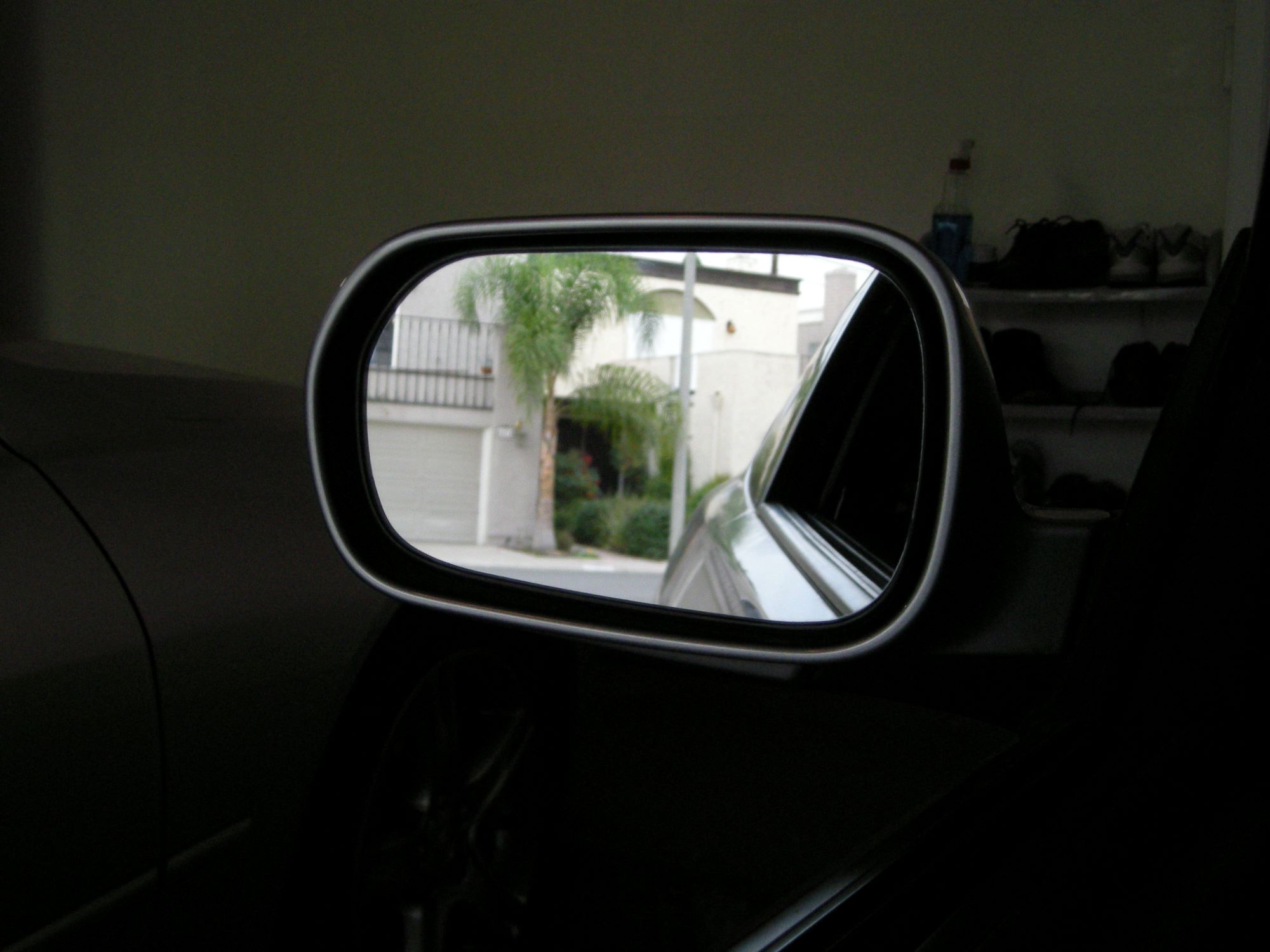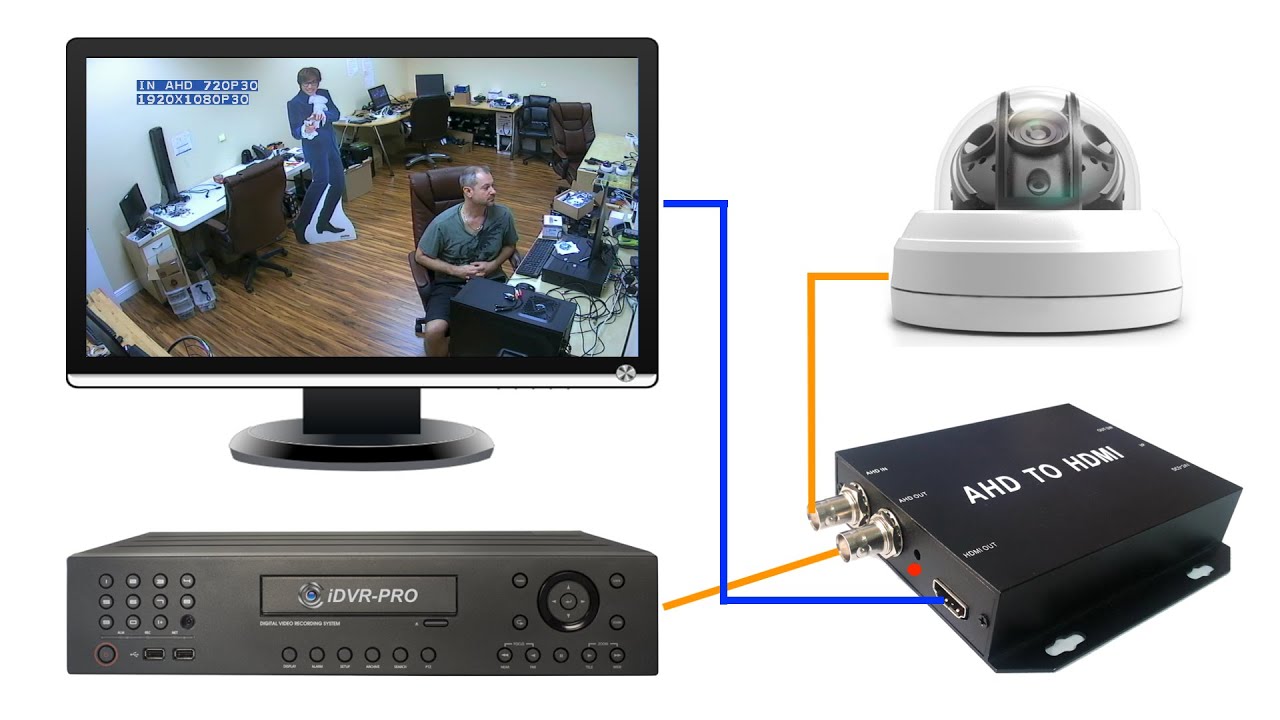

Articles
How Many Rear View Mirrors Are Required
Modified: January 6, 2024
Find out how many rear view mirrors are required for your vehicle and ensure safe driving. Read our informative articles to learn more.
(Many of the links in this article redirect to a specific reviewed product. Your purchase of these products through affiliate links helps to generate commission for Storables.com, at no extra cost. Learn more)
Introduction
In the world of automobiles, safety is always a top priority. Whether you’re driving on a busy highway or navigating through narrow streets, being aware of your surroundings is essential. One of the key components that contribute to road safety is the rear view mirror. These simple yet powerful devices provide drivers with an additional perspective, enabling them to monitor the traffic behind their vehicle without having to turn their heads.
Rear view mirrors play a crucial role in preventing accidents and ensuring the overall safety on the road. They have come a long way since their inception, evolving to meet the needs of modern vehicles and demanding road conditions.
In this article, we will delve into the history of rear view mirrors, discuss their importance, explore the regulations and requirements surrounding them, explore the different types available, and provide valuable tips on choosing the right rear view mirror for your vehicle. So, let’s buckle up and take a closer look at these overlooked yet vital automotive devices.
Key Takeaways:
- Rear view mirrors are crucial for road safety, providing enhanced visibility, preventing accidents, and reducing blind spots. Understanding regulations and choosing the right type is essential for optimal functionality.
- Common issues such as blurriness, vibration, and glare can impact rear view mirrors. Regular maintenance and addressing these issues are vital to ensure clear visibility and road safety.
Read more: How Much Are Rear View Mirrors
History of Rear View Mirrors
The concept of rear view mirrors dates back to the 19th century, when automobiles were still in their infancy. However, the early versions of these mirrors were far from what we are familiar with today. In the early days, drivers relied on external mirrors attached to the sides of their vehicles to get a glimpse of what was happening behind them.
The first internal rear view mirror was introduced in 1911 by a man named Ray Harroun. Harroun, an American automobile racer, mounted a mirror on his Marmon Wasp race car for the Indianapolis 500 race. This innovation allowed him to have a clear view of the racetrack behind him, giving him a competitive advantage.
Following Harroun’s revolutionary invention, rear view mirrors gradually gained popularity and became a standard feature in automobiles. However, during the early stages, these mirrors were still manually adjustable and had limited field of view.
It wasn’t until the mid-20th century that rear view mirrors saw significant advancements. In the 1940s, electrochromic mirrors were introduced, which could automatically dim the glare from headlights behind the vehicle at nighttime. This innovation greatly improved visibility and reduced driver discomfort.
In the 1960s, the introduction of day-night mirrors further improved rear view visibility. These mirrors featured a flip switch that allowed drivers to adjust the mirror’s tint according to the lighting conditions, reducing glare and enhancing visibility during the day and night.
With the advancement of technology, rear view mirrors continued to evolve. The development of anti-glare coatings, wide-angle mirrors, and even electronic rear view mirrors with cameras integrated into them has further enhanced safety and visibility for drivers.
Today, rear view mirrors are mandatory in all vehicles, serving as an indispensable tool for drivers to monitor the traffic behind them. They have become an integral part of automobile design, constantly evolving to improve the driving experience and increase overall safety on the road.
Importance of Rear View Mirrors
Rear view mirrors play a crucial role in ensuring the safety of drivers, passengers, and pedestrians on the road. Here are some key reasons highlighting the importance of rear view mirrors:
- Enhanced Visibility: Rear view mirrors provide an additional field of vision for drivers, allowing them to see vehicles approaching from the rear. This increased visibility helps identify potential hazards, such as tailgating vehicles or emergency vehicles, and enables drivers to make informed decisions on the road.
- Preventing Accidents: By constantly monitoring the traffic behind the vehicle, rear view mirrors help drivers avoid collisions during lane changes, turns, and maneuvers. They allow drivers to accurately judge the distance and speed of approaching vehicles, ensuring safe and timely actions.
- Monitoring Rear Passengers: Rear view mirrors are not only useful for monitoring traffic but also for keeping an eye on passengers in the backseat, especially children. Parents can keep a watchful eye on their kids without turning their heads away from the road.
- Reducing Blind Spots: Blind spots, areas around the vehicle where other vehicles may not be easily visible, can pose a significant risk. Rear view mirrors help to minimize blind spots, providing a wider field of view and reducing the chances of accidents caused by vehicles lurking in these zones.
- Enhanced Driving Confidence: Having the ability to see what is happening behind the vehicle instills confidence in drivers. It allows them to anticipate and respond to potential dangers proactively, resulting in safer and more assertive driving practices.
Overall, rear view mirrors are an essential safety feature in vehicles. They provide drivers with critical information, improve situational awareness, and help prevent collisions. Proper utilization of rear view mirrors can significantly contribute to reducing accidents and making the roads safer for everyone.
Regulations and Requirements for Rear View Mirrors
When it comes to rear view mirrors, there are specific regulations and requirements set by regulatory authorities to ensure the safety and functionality of these devices. These regulations vary from country to country, but they generally focus on the following aspects:
- Number of Mirrors: Most countries mandate the presence of at least one rear view mirror on the driver’s side of the vehicle. Some jurisdictions may require additional mirrors, such as a passenger-side mirror or a center mirror to provide a broader field of view.
- Size and Visibility: Rear view mirrors must be of an adequate size to provide a clear view of the traffic behind the vehicle. They should have sufficient reflective surface area to reflect the rearview image effectively. Additionally, regulations often specify minimum visibility requirements, such as the elimination of distortion or obstruction of the reflected image.
- Adjustability: Rear view mirrors should be adjustable to allow drivers to position them according to their height and seating position. This adjustability ensures optimal visibility and minimizes blind spots.
- Sturdiness and Stability: Rear view mirrors need to be securely mounted to the vehicle to withstand normal driving conditions and vibrations. They must remain stable and not vibrate excessively, as this can hinder visibility and distract the driver.
- Anti-Glare Features: Many regulations require rear view mirrors to include anti-glare features, especially for nighttime driving. These features, such as dimming mechanisms or special coatings, reduce the intensity of reflected light from other vehicles’ headlights, preventing glare and enhancing visibility.
It is important for vehicle owners and manufacturers to adhere to the regulations and requirements set by their respective authorities to ensure compliance and maintain road safety. Failure to comply with these regulations can lead to fines, penalties, or even the inability to legally operate a vehicle.
It is also worth noting that while regulations provide a baseline for rear view mirror requirements, drivers should prioritize their own safety and consider augmenting their vehicles with additional mirrors or technologies, such as blind spot detection systems or backup cameras, to further enhance their visibility and mitigate the risks associated with blind spots.
In most places, only one rear view mirror is required by law. However, it’s always a good idea to have additional mirrors for better visibility, especially when towing a trailer or driving a larger vehicle.
Types of Rear View Mirrors
Rear view mirrors come in various types, each offering unique features and benefits. Here are some common types of rear view mirrors:
- Conventional Mirrors: Also known as flat mirrors, conventional rear view mirrors are the standard type found in most vehicles. They consist of a flat reflective surface enclosed in a plastic or metal frame. These mirrors provide a clear, undistorted view but have a limited field of vision.
- Convex Mirrors: Convex rear view mirrors are curved outward, creating a wider field of view compared to conventional mirrors. The curvature allows drivers to see a larger area, reducing blind spots and improving overall visibility. However, objects in the mirror may appear smaller and farther away than they actually are.
- Electrochromic Mirrors: Electrochromic rear view mirrors are equipped with technology that automatically adjusts the mirror’s tint in response to glare from headlights. This feature dims the mirror, reducing the intensity of the light and improving visibility for the driver.
- Auto-Dimming Mirrors: Auto-dimming rear view mirrors function similarly to electrochromic mirrors. These mirrors use sensors to detect bright lights and automatically dim the mirror to reduce glare. When the lights are no longer detected, the mirror returns to its regular state.
- Wide-Angle Mirrors: Wide-angle rear view mirrors, also known as panoramic mirrors, offer an expanded field of view compared to conventional mirrors. They use a curved design to provide a broader vision of the surroundings, reducing blind spots and enhancing safety.
- Integrated Backup Camera Mirrors: These rear view mirrors are equipped with a built-in display that shows real-time footage from a backup camera installed on the back of the vehicle. This combination allows drivers to have a clear view of what is behind them, making parking and maneuvering easier.
The selection of the appropriate rear view mirror depends on individual preferences, driving needs, and the specific requirements of the vehicle. It is crucial to consider factors such as visibility, field of view, anti-glare features, and ease of adjustment when choosing the right type of rear view mirror for your vehicle.
It’s worth noting that additional mirror attachments, such as blind spot mirrors or baby mirrors, can also be used to further enhance visibility and address specific concerns related to blind spots or monitoring rear passengers.
Read more: Who Fix Rear View Mirrors
Factors to Consider When Choosing Rear View Mirrors
Choosing the right rear view mirror for your vehicle is essential to ensure optimal visibility and safety on the road. Here are some important factors to consider when making your selection:
- Type of Mirror: Determine which type of rear view mirror best suits your needs. Consider factors such as visibility, field of view, anti-glare features, and any specific requirements you may have.
- Mounting Options: Rear view mirrors can be attached to the windshield, dashboard, or the interior roof of the vehicle. Consider the mounting option that is most convenient and provides the best visibility for your driving style.
- Size and Shape: The size and shape of the rear view mirror can impact your visibility. Opt for a mirror that provides a clear and unobstructed view of the traffic behind you without creating blind spots.
- Adjustability: Ensure that the rear view mirror is easily adjustable to accommodate different drivers and seating positions. This allows you to position the mirror for optimal visibility and minimize blind spots.
- Anti-Glare Features: Consider whether you require a rear view mirror with anti-glare features, such as electrochromic or auto-dimming technology. These features help reduce glare from other vehicles’ headlights, improving visibility and reducing eye strain.
- Compatibility with Safety Systems: If your vehicle is equipped with advanced safety systems, such as lane departure warning or forward collision warning, make sure that the rear view mirror does not obstruct these features or interfere with their functionality.
- Budget: Consider your budget when choosing a rear view mirror. While cost-effective options are available, it’s important to invest in a high-quality mirror that meets safety requirements and offers durability for long-term use.
Ultimately, the goal is to choose a rear view mirror that provides clear visibility, minimizes blind spots, and enhances safety on the road. It is advisable to closely examine the specifications and features of different mirrors, seek recommendations, and even test them out if possible before making a final decision.
Remember, a rear view mirror is a vital component of your vehicle’s safety system, so prioritize quality and functionality when selecting the right mirror for your vehicle.
Common Issues with Rear View Mirrors
While rear view mirrors are essential for safe driving, they are not immune to certain issues. Understanding and addressing these common problems can help ensure the proper functionality of your rear view mirror. Here are some common issues drivers may face:
- Blurriness: Over time, rear view mirrors may become dirty or develop a hazy film, resulting in blurred reflections. Regular cleaning and maintenance can help prevent this issue and ensure a clear view of the road behind.
- Vibration: Excessive vibrations can compromise the stability of rear view mirrors, making it difficult to see a clear reflection. Loose or worn-out mounting hardware can contribute to this issue. Checking and tightening the mirror’s mounting hardware can help reduce vibrations.
- Glare: Glare from bright lights, particularly at night, can be a significant problem. This can hinder visibility and cause discomfort for the driver. Adjusting the mirror’s position or using mirrors with anti-glare features can help mitigate this issue.
- Mirror Misalignment: Mirrors can become misaligned due to accidental bumps or constant adjustments. A misaligned rear view mirror can obstruct the driver’s view and lead to blind spots. Properly aligning the mirror and ensuring it remains securely in place can rectify this problem.
- Cracked or Damaged Mirror: External factors such as debris or accidents can cause the mirror’s glass to crack or shatter. A damaged mirror not only hampers visibility but is also a safety concern. In such cases, replacing the entire mirror or just the glass panel may be necessary.
- Diminished Reflectivity: Over time, the reflective coating on the mirror’s surface may degrade, resulting in diminished reflectivity. This can negatively impact visibility. If the mirror’s reflectivity is compromised, replacing the mirror is the best solution.
- Inadequate Field of View: Some rear view mirrors may have a limited field of view, leading to blind spots. This can make it challenging to detect vehicles approaching from certain angles. Upgrading to a wider-angle mirror or adding supplementary mirrors can expand the field of view and improve overall visibility.
Regular inspection and maintenance of rear view mirrors can help identify and address these issues early on, ensuring that they remain functional and provide optimum visibility. If any of these issues persist despite troubleshooting, it is advisable to consult a professional for further assistance or consider replacing the mirror altogether.
Remember, a clear and properly functioning rear view mirror is essential for road safety, so it deserves your attention and care.
Conclusion
Rear view mirrors may seem like simple components in a vehicle, but they play a crucial role in ensuring road safety. They provide drivers with a clear view of the traffic behind them, reducing blind spots and enabling timely and informed decision-making on the road. Throughout the years, rear view mirrors have evolved to meet the changing needs of drivers and advancements in technology.
Understanding the history, importance, regulations, and different types of rear view mirrors allows us to make informed decisions when choosing the right mirror for our vehicles. Factors such as visibility, adjustability, anti-glare features, and compatibility should be taken into consideration during the selection process.
However, it is important to be aware of common issues that can affect the functionality of rear view mirrors. Blurriness, vibration, glare, misalignment, and cracked or damaged mirrors are some problems that should be promptly addressed to ensure proper visibility and safety on the road.
As technology continues to advance, rear view mirrors may undergo further innovations, such as integrated cameras or advanced sensors. These developments aim to enhance the driver’s visibility and overall driving experience.
Ultimately, rear view mirrors are more than just reflective surfaces. They are essential tools that help drivers stay aware of their surroundings, avoid accidents, and protect themselves, their passengers, and pedestrians. So, make sure to keep your rear view mirrors in good condition, adjust them properly, and always prioritize safety during your journeys on the road.
Frequently Asked Questions about How Many Rear View Mirrors Are Required
Was this page helpful?
At Storables.com, we guarantee accurate and reliable information. Our content, validated by Expert Board Contributors, is crafted following stringent Editorial Policies. We're committed to providing you with well-researched, expert-backed insights for all your informational needs.















0 thoughts on “How Many Rear View Mirrors Are Required”